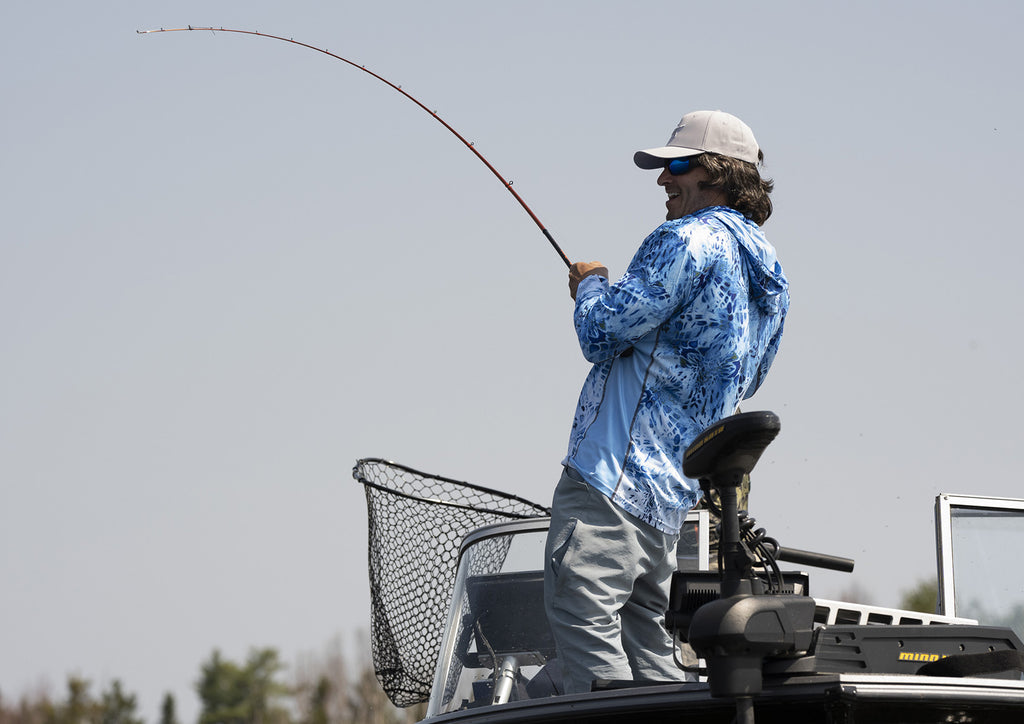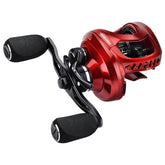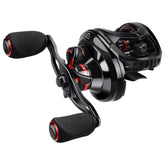
A Guide to Choosing Baitcast Reels
As an avid angler, new-comer to the sport or weekend warrior, you have to ask yourself from time-to-time, “How do I choose the right baitcasting reel?” Baitcasting reels come in a variety of sizes with gear ratios from super slow to super high speed and line capacities from minimal to several hundred yards. When you begin to explore what baitcaster you need for your angling experience, there are factors that weight in. Let’s tear down the baitcasting conundrum of what is best so no matter what kind of angler you are, choosing the right reel is made easier.
Gear Ratio.
To me, gear ratio is the most important factor. Without the proper gear ratio, “working” a bait/lure can be difficult. In the old days, we all used between a 6.0:1 or 6.5:1. The reel could be cranked slower if needed and faster to speed retrieve. On the low side however, gear ratio also gives you cranking power, and just slowing the handle down does not aid this. If I am throwing a deep diving crankbait in 25-feet of water all day, I want a reel that is going to allow me to fish effortlessly, not one that after an hour, my hand aches. A lower ratio of 5.4:1 and large capacity spool like the Kapstan Elite 300 allows this. In fact, you could fish all day with that reel with ease.
When I fish a beaver dam I want a low speed reel to be able to “winch” the bass out of its lair

On the other hand, if I am using a frog in matted grass, where blow-ups need a quick follow-up cast, I want a high speed reel like the Speed Demon Elite and its 10.1:1 gear ratio. I will sacrifice cranking power by using a more-stout rod to break the fish loose of the grass, but I want that quick retrieve to reel in and get another cast off while the fish is still interested.
The last factor when choosing what gear ratio you want is what style bait you are using. A stick work like a Senko can be worked well on just about any ratio, but for a jerkbait, I like the mid-range ratios from 6.0:1 to 7.0:1. These ratios give me the speed to get the bait to the depth I want, plus the ratio to allow me to twitch and work the way the bait needs to be worked for success. Below are a few reels KastKing offers, and what I feel they could match up to – lure wise.
- KastKing Bassinator – 8.1:1 – Speed cranking and worm baits
- Speed Demon Elite – 10.1:1 – Fast retrieve to get back out there!
- Kapstan Elite 300 – 5.4:1 – Deep all day cranking or heavy baits fished in hard current
- Speed Demon Elite Skipping Reel – 8.4:1 – Shallow spool, fast start-up; great for skipping
Anglers have a wide choice of gear ratios and styles where baitcasting reels come into play

These are just a few good gear ratios that work in certain circumstances. You will need to experiment because every angler is different and may want a slightly higher or lower ratio when choosing the right baitcasting reel for the day. Keep in mind when choosing that making the bait/lure “work” properly is the key component.
Line capacity
When talking about line capacity, believe it or not, it does matter. Just because a reel holds more line than you need does not make it the perfect baitcasting reel, it just simply means it has the capacity. There are several instances where line capacity come into play.
Have you ever tried to skip a bait under a dock with 150 yards of 20-pound fluorocarbon on the reel? It could get real ugly, real quick if you are not good at it. I have seen reels blow up like a Chia pet after it gets watered. To eliminate this, or greatly reduce it, the KastKing Speed Demon Elite Skipping reel is the option as it holds a lot less line, thus the spool starts spinning very early into the cast. When this happens, the line comes off the spool faster than the spool is revolving, hence no backlashing. On the other side of the spectrum, making long casts with heavier baits require a reel with a larger capacity. The large capacity does make the cast longer, but it ensures when a lot of line is off the spool, the drab works well. The deeper you get into the reels spool, the tighter the drag will become, making a drag set at 10 pounds, react more like one set at 15. Breaking off fish, or pilling hooks can become the issue.
A baitcaster with a deep spool and high line capacity worked well for this angler. This bass was on a point and took a long cast to sneak up on

Most baitcasting reels will be spooled with 100-150 yards of the “working” line you choose, with the remainder the backing line that you will never see unless you re-spool the reel. For me, I use old line or just plain monofilament as the backing. The only instance where I do not recommend backing is on any of the bait finesse style reels where the line capacity is already very low. For these reels, the “working” line should be all that is on the reel.
In Conclusion
When you decide to get a new baitcasting reel and are trying to choose what reel will work best for you, way in the variables from above. If your budget is limited then go with the old stand-by 6.1:1 to 6.5:1 ratio. This gear ratio will work well with 75 percent of the lures you use, while the remainder will just have to be used to work a particular bait – long casting a frog, skipping a bait etc. – by either slowing down the handle retrieve, or speeding it up.
The “right” baitcasting reel will just take a little time and exploration of what you plan to fish for, and what size and style lures you will be using. KastKing offers reels from super slow to hi speed, low capacity to large capacity and every point in between. I am sure you can get the right one, or be like most anglers…buy a mess of them!












